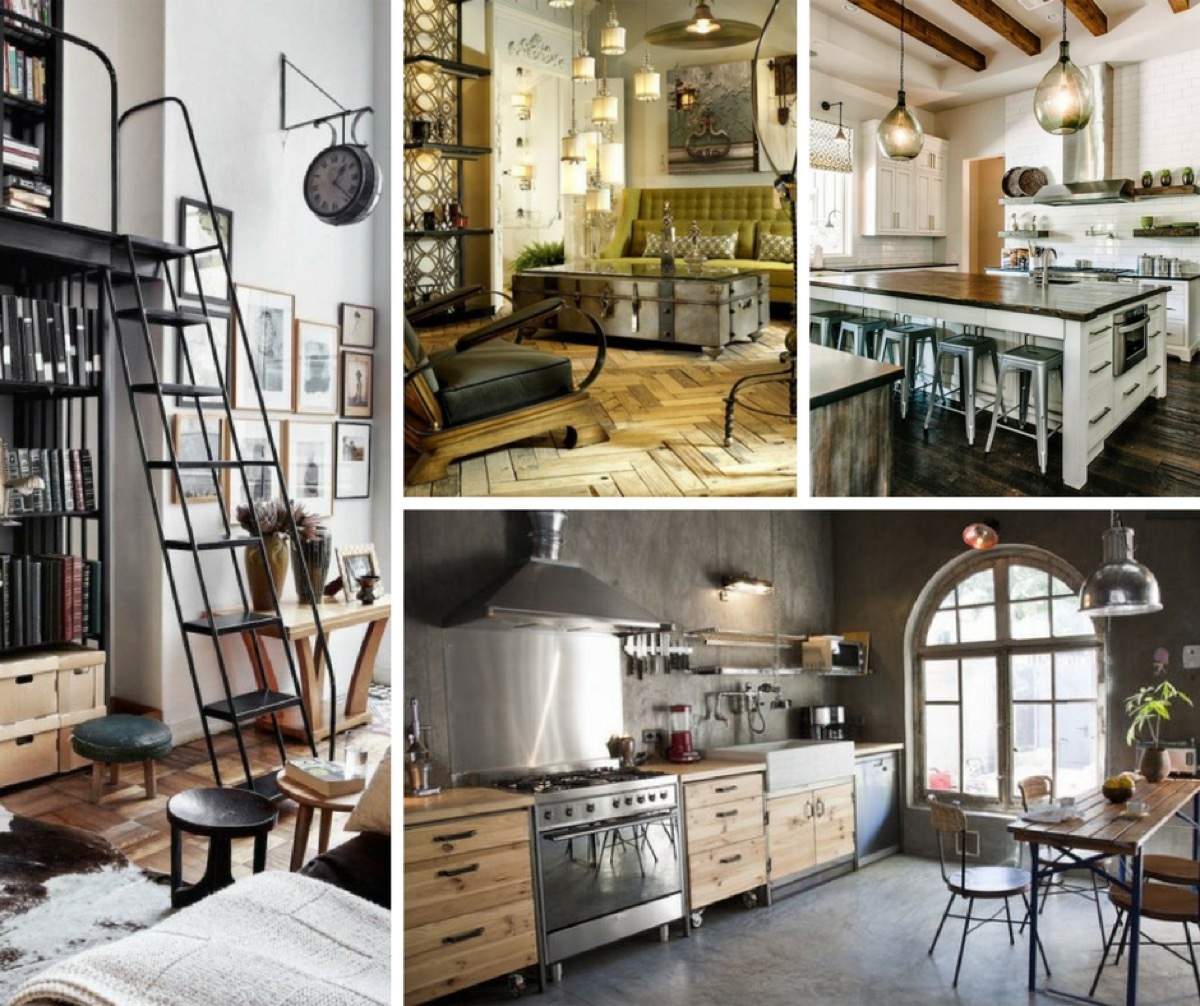In 2016, NPR’s Natalie Jacewicz asked the question: “Why does every new restaurant look like a factory?” Indeed, over the last ten years, the industrial look has dominated popular interior design, aided by the enduring popularity of boutique companies like Restoration Hardware. Recently, more traditional stylings, sometimes called Farmhouse Modern or Texas Modern – like those featured on HGTV’s hit Fixer Upper – have permeated households far removed from the show’s home in Waco, Texas.
What do both of these styles have in common? They’ve both been referred to as “rustic modernism.”
The industrial-chic aesthetic and the “Fixer Upper” aesthetic are really two sides of the same coin: nostalgia and a desire for authenticity, manufactured or otherwise. If Industrial-chic is the urban interpretation of the rustic modern ideal, farmhouse modern is the rural version.
The Origins of Industrial Chic
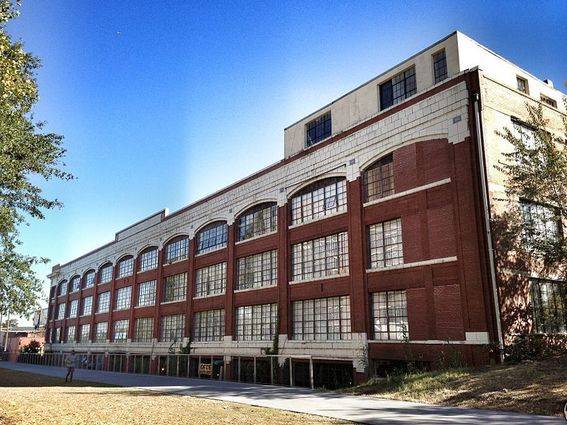
Photo by Keizers (CC BY-SA 3.0)
The industrial chic aesthetic became popular around 2007, heavily tied to an increasingly popular architectural practice called “adaptive reuse.” Adaptive reuse is the repurposing of existing, often historically or architecturally interesting buildings for other uses after they no longer serve their original purpose. Due to rapid deindustrialization in the 1970s, 80s, and 90s, many urban buildings began to see continuous decline and depopulation.
To prevent these buildings from falling into disuse, many developers began repurposing them with the hope of bringing back wealth to weakened industrial districts. Factories, mills, warehouses, fire stations, and other infrastructure saw new lives as trendy lofts, restaurants, breweries, art galleries, maker-spaces, and performance venues.
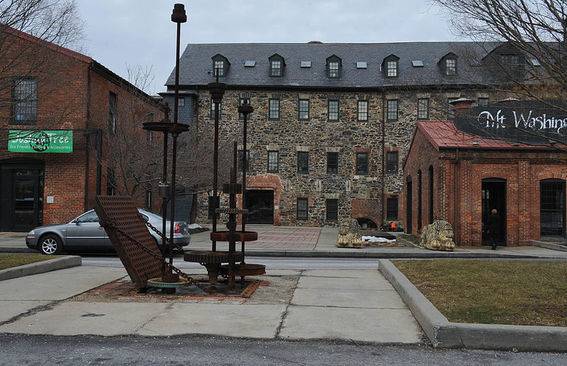
Photo by Jerrye & Roy Klotz, MD (CC BY-SA 4.0)
Designers and developers, wanting to capitalize on the unique qualities of these historic spaces, aimed to create a new style that harkened back to the buildings’ glory days; favoring details such as exposed brick walls, visible piping and conduit, tall ceilings, and concrete floors.
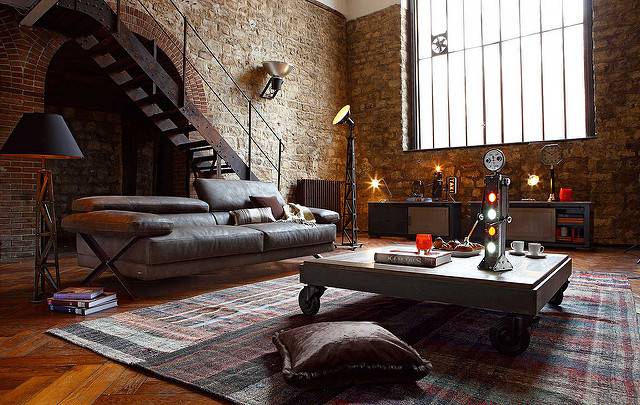
Photo by TNS Sofres (CC BY-2.0)
Deciding that the slick, dramatic modernism of the 80s and 90s did not suit these unique spaces, designers sought out inspiration from the buildings’ heyday – the late 19th and early 20th century. Perhaps taking some cues from the nascent Steampunk movement, details from the turn of the century, such as Edison bulbs, iron stairs, gunmetal finishes, and the functional, hefty-duty furniture used in factories became popular amongst interior decorators of the time.
How to get the look
- Draw attention to unfinished surfaces and materials: wood, brick, stone, concrete, even things like exposed ductwork.
- Metals are key in industrial-chic – metal chairs, countertops, and appliance finishes drive this warm look.
- Keep walls neutral – exposed surfaces are best, but white, off-white or gray walls accentuate the rich textures of wood and metal.
- Avoid bright, bold fabrics and colors. Muted colors work on surfaces like rugs or accent pillows.
- Don’t over-plush – keep fabrics minimal, with clean weaves like plain linen. For upholstery, emphasize the natural: choose leather or dark or metallic fabrics.
- Search for dramatic lighting fixtures that harken back to earlier days, like free standing spotlights, angle lamps, tripod lamps, and Edison-bulb pendants. Warm lighting hues can brighten up spaces that would be otherwise cold.
- A staple of the style is furniture inspired by old factory or laboratory equipment. Places like Restoration Hardware and Pottery Barn may be an easy start, but if you feel up to it – digging around in flea markets and junk shops can’t hurt!
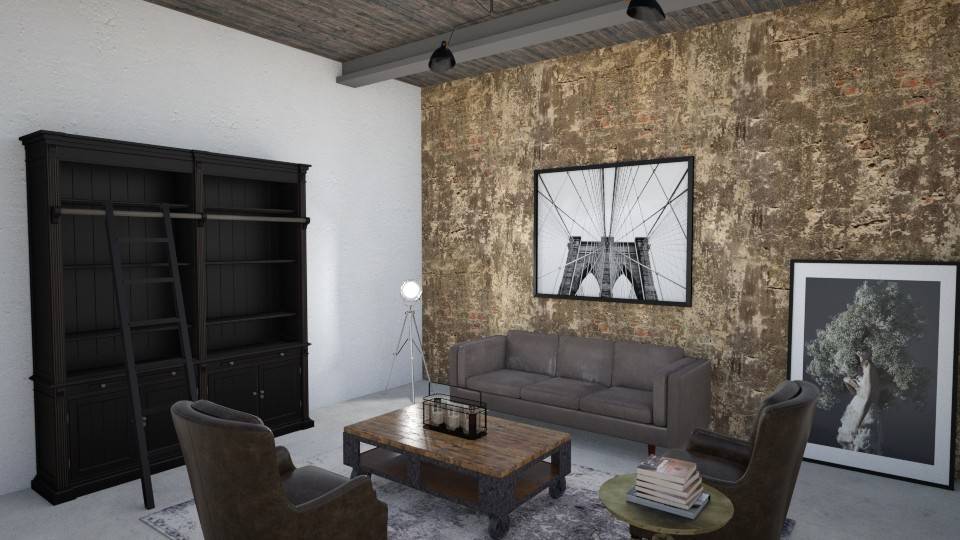
Get the Industrial Chic look (on a budget):
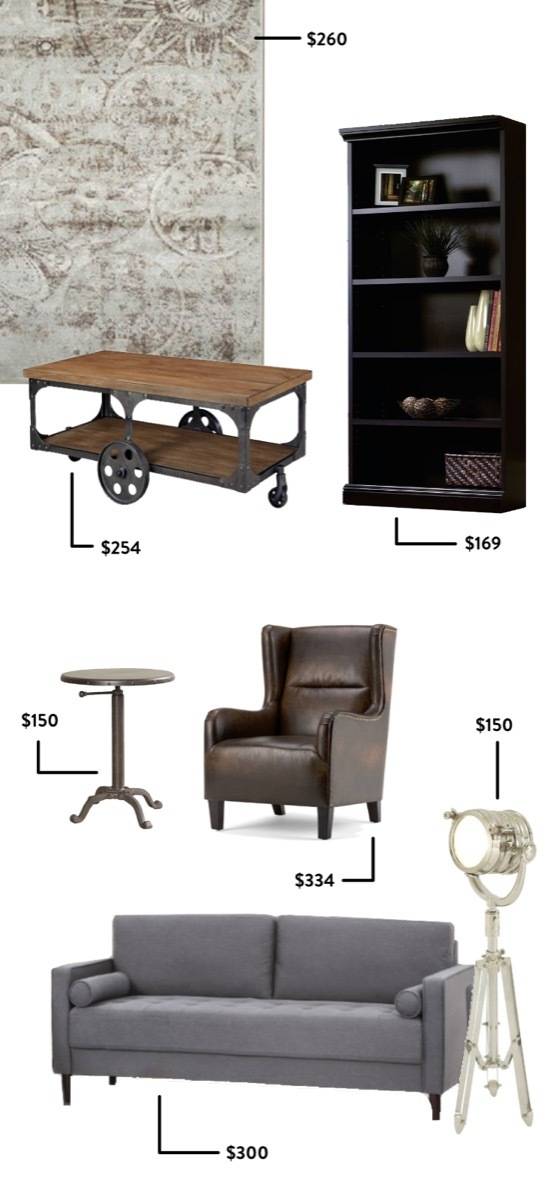
Coffee Table: $254, Amazon.com; Lamp: $150, Wayfair.com; Bookshelf (x2): $169, Amazon; Sofa: $390, Wayfair.com; Armchairs: $334 (ea), Overstock.com; End Table: $150, Wayfair.com; Rug: $260, Wayfair.com
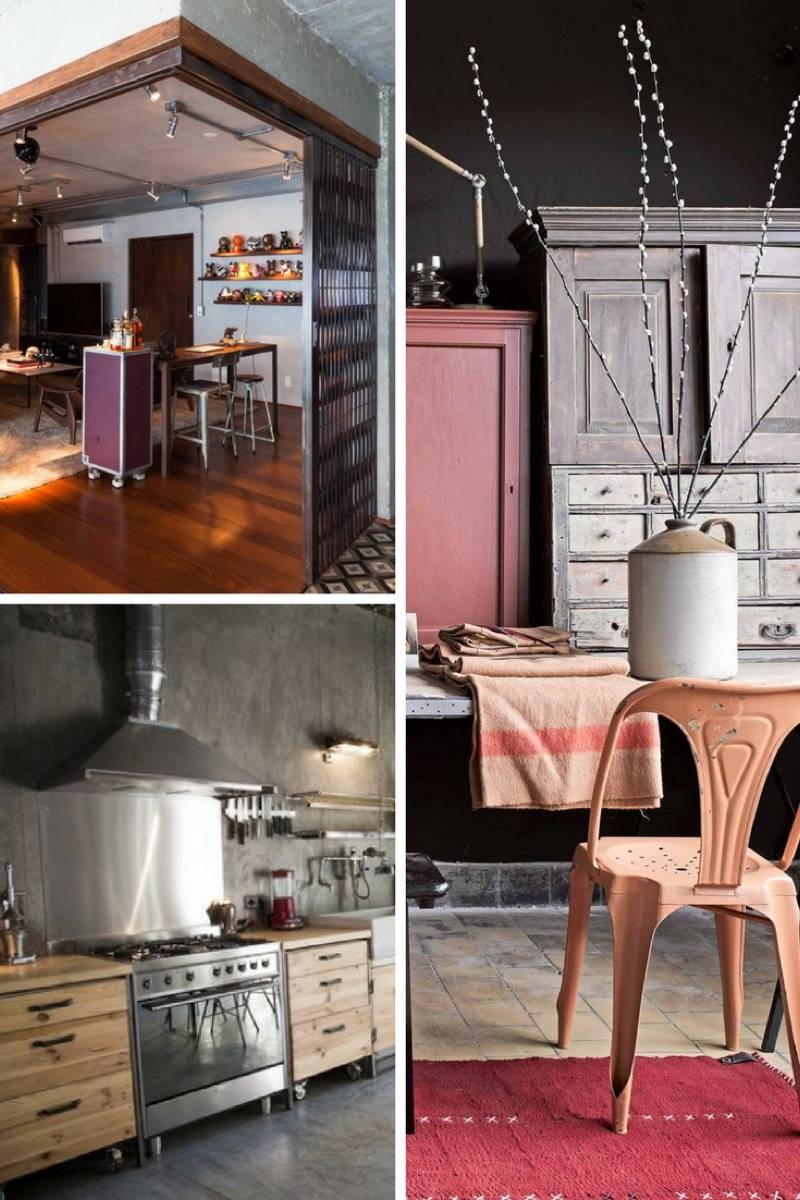
The Philosophy Behind the Industrial Chic Style
After decades of decimation from white flight, urban renewal, and deindustrialization, industrial chic bespoke an urban nostalgia for the period during which the cities reached the apex of their population and power. Combined with practices of sustainability – upcycling, restoration, and repurposing – adaptive reuse proved popular with more environmentally informed and educated buyers, and industrial chic became popular with it.
Attracted by industrial chic’s appearance of authenticity, the aesthetic became heavily borrowed by the do-ers of the 21st century: makers, startups, and entrepreneurs, and, perhaps because of its sparseness and physical durability, remains the interior lingua franca of new bars, restaurants, and breweries.
The furniture of Restoration Hardware and pieces salvaged from old industrial uses is curious. Enough time has passed since the heyday of America’s most grueling industrial woes (The Jungle, anyone?) that the sinister imagery of factory work and equipment can be distanced from the objects of said work. Carts that were used for moving meat or assembling things now work out-of-context because enough time has passed between said context and the current day. Despite this past, Industrial furniture is so popular primarily because it is imbued with the notion that it can survive grueling work conditions, and therefore, will easily endure the follies of everyday life.
Farmhouse Modern
Rusticism in the American home in the last quarter of the 20th century revolved around heavily themed rooms a la Trading Spaces. In the 1980s, the frills of Laura Ashley, plush furnishings and bold, often floral patterns harkened back to the busy, stuffy interiors of the Victorian era. In the 90s, rusticism took on more regional tones: country kitsch kitchens smothered in gingham and sponge-painted, southwestern Mission-inspired living rooms were both popular thematic trends.
Moving into the New Millennium, the 2000s saw the focus of rusticism shift to more exotic, international influences: French Country kitchens, stuffy Georgian dining rooms, and Tuscan-themed bedrooms were all extremely popular during this time. Each of these periods involved traditionalism guided by hyperbolic theme-ing that seemed closer to a television set than a personalized interior. Remember wall stenciling?
The time had come for a new, more tame aesthetic. Enter: Farmhouse Modern.
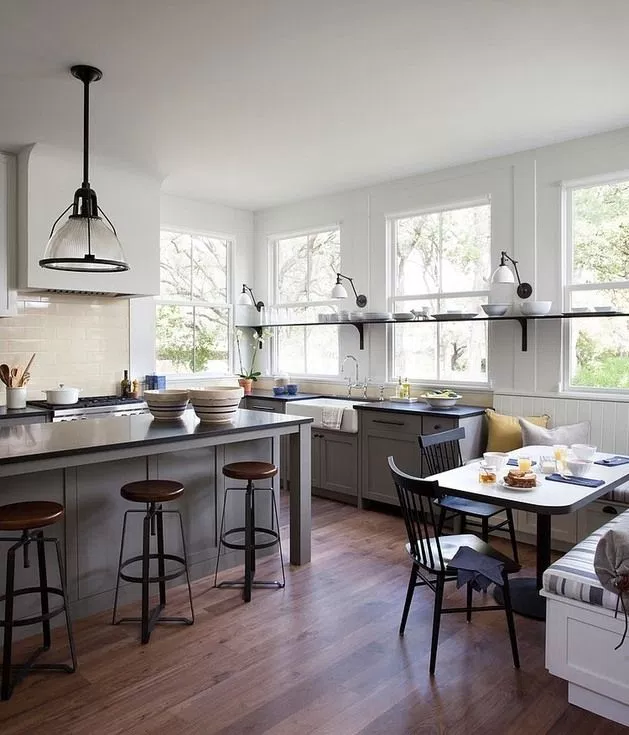
The History of Farmhouse Modern
Like industrial chic, farmhouse modern focuses on the personal connection to the space, and its architectural authenticity. Aesthetic origins of the style are varied: many spaces are influenced by actual farmhouses and other examples of American vernacular architecture, appearing to have come straight from paintings by the 20th century artist Edward Hopper and his contemporaries, practicing the style called American Realism.
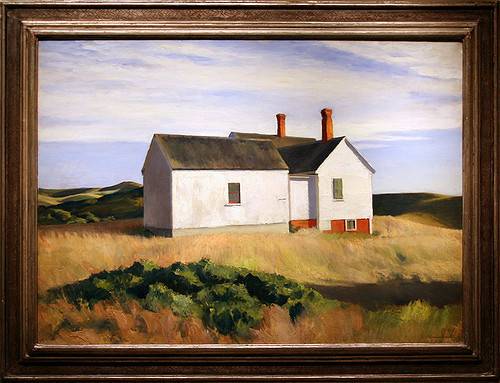
The use of materials such as shiplap in farmhouse modern interiors harkens back to the days of self-built homes, where it was a popular material for exterior siding, sheds, and outhouses because of its weather-resistance, smooth profile, and ease of installation. The leftover exterior material found common use in vernacular farmhouse interiors, like the one below.
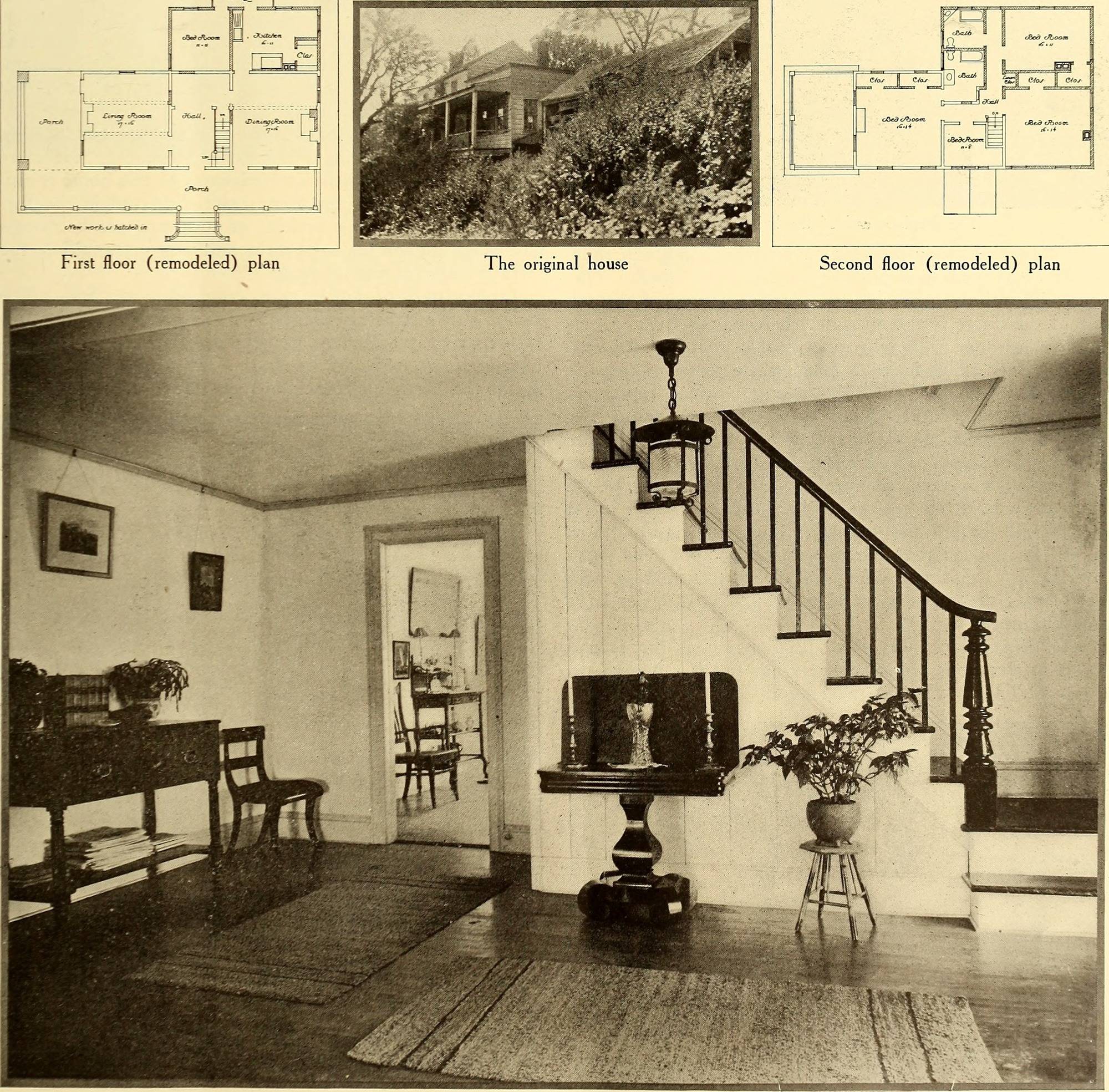
As far as the style’s lineage from the recent past goes, it has its origins in the boutique, often beachy, shabby chic transitional interiors found in House Beautiful and Architectural Digest starting from around 2005.
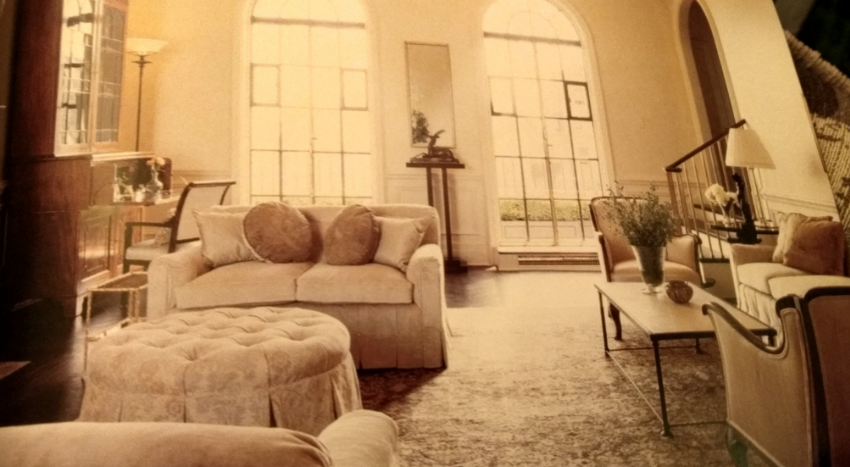
How to get the look
- Emphasize natural materials, especially wood and stone for an earthy feel.
- Keep interiors open with light paint colors – unlike industrial chic, this style thrives on airiness. Whitewashed brick and shiplap add texture to a room without closing it in.
- Avoid overly busy patterns in things like upholstery (accent pillows are fine!), curtains, and please, think twice about wallpaper. Simple, neutral linen gives a room a fresh, breezy look.
- Check out your local architectural salvage for cool items like old cabinets, reclaimed wood, or anything else you feel could give the room some character!
- Integrate a few choice items from other styles, such as a mid-century side-tables or industrial-chic barstools.
- Quality over quantity is key to this look – invest time in searching flea markets, junk stores, and garage sales to save money, but also consider investing a chunk of change in a few high-quality pieces.
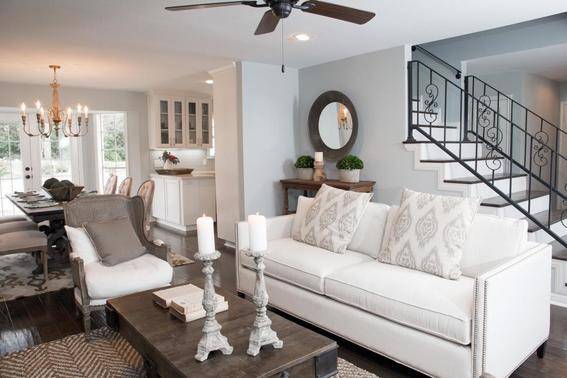
Photo Copyright HGTV. Source.
Get the Farmhouse Modern look (on a budget)
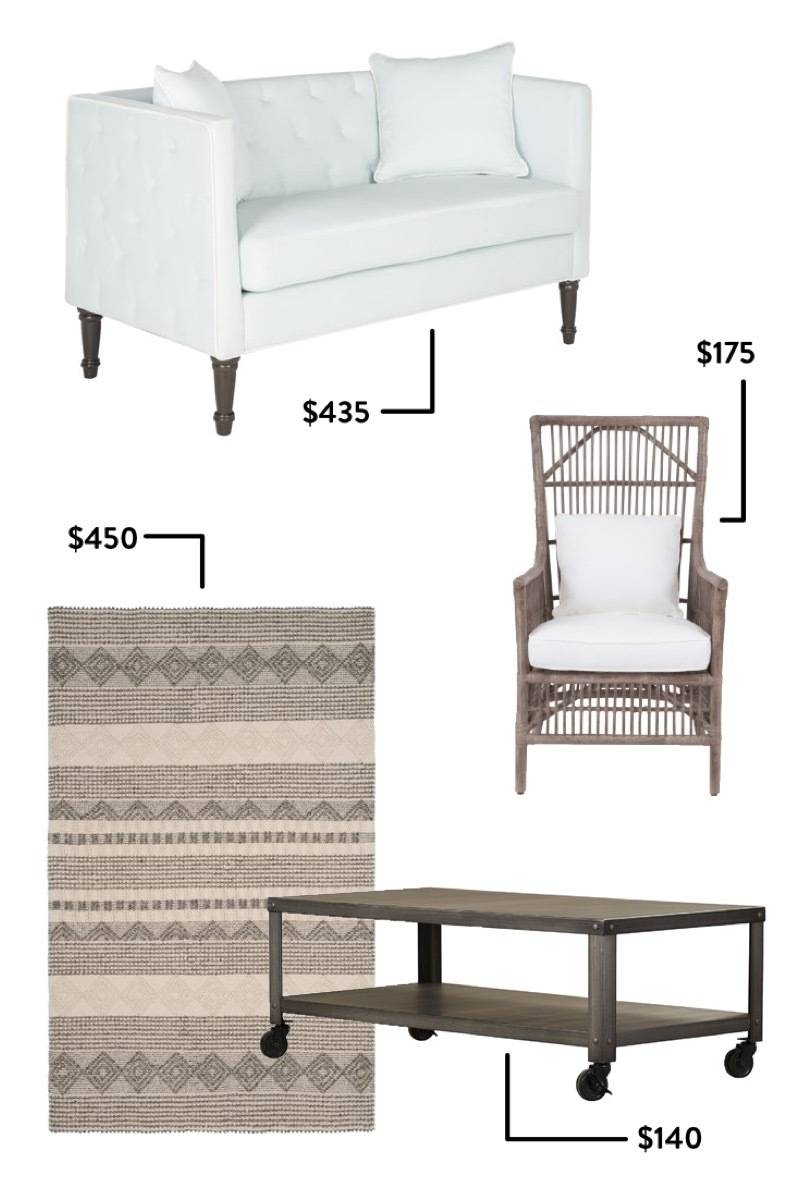
Rug: $450, Wayfair.com; Table: $140, Wayfair.com; Sofa: $435, Wayfair; Chair: $175, Hayneedle.
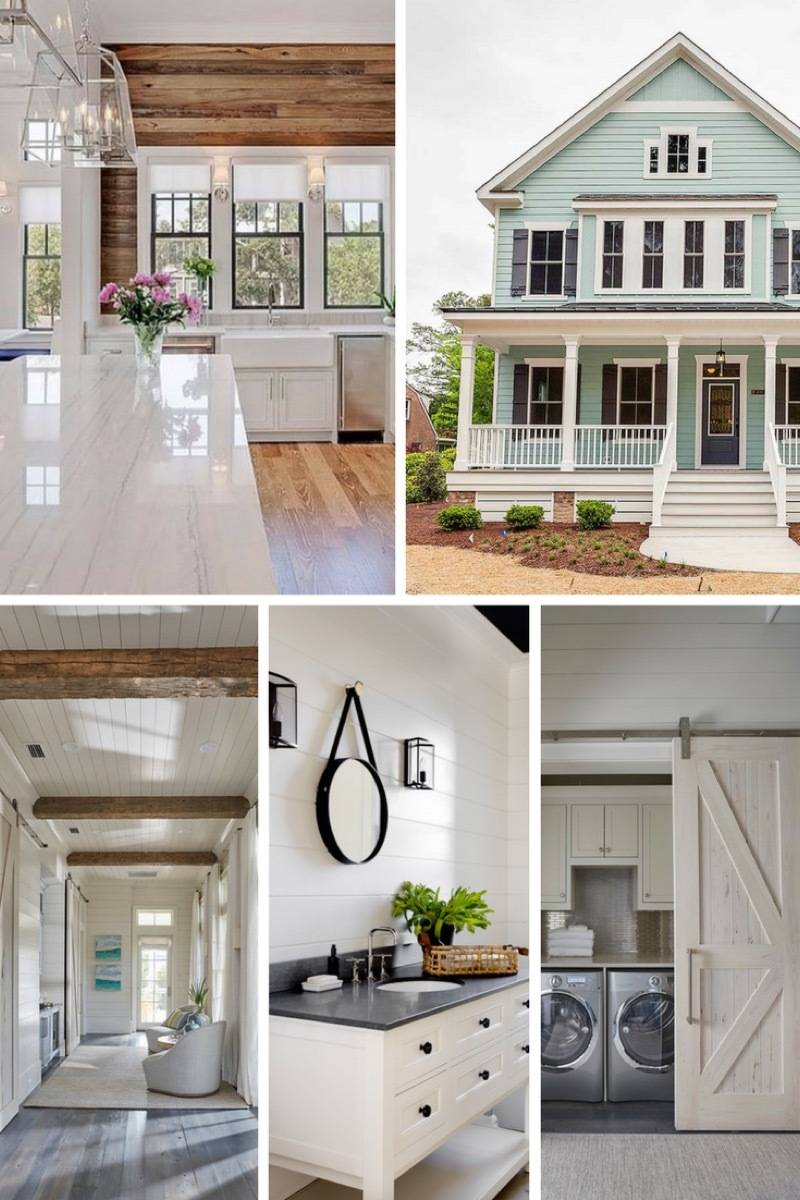
The Philosophy of the Farmhouse Modern Style
The subdued aesthetic of Fixer Upper and co. is interesting because of its blend of rustic elements (reclaimed wood, shiplap, antiques) with the pared-down sparseness of modernism: neutral colors, restrained ornament, and clean, open spaces. Often introducing elements from both industrial chic and the more stripped down side of mid-century modernism, farmhouse modern is, above all, materials driven. The quality of the materials and the history of the materials used is a common feature of episodes of Fixer Upper, where the show’s couple, Chip and Joanna Gaines, frequently seek out wood from barns, antiques, and details from architectural salvages.
If industrial-chic is nostalgic for the days when American cities were at their most potent, farmhouse modern is nostalgic for a hand-built American aesthetic, found in small towns and isolated farmhouses peppering the rural landscape. The longing for a sparse, vernacular architecture imbued with history, speaks to the vast number of Americans who live in not-quite rural conditions themselves: the suburbs. The desire for the hand-made, and a personal connection to the object resonates with people who grew weary of themes, all-in-one furniture sets, and faceless tract housing. To have interiors that feel authentic, approachable, and American reconciles for many people the dull suburban housing aesthetic that’s often most affordable to them.
Both industrial-chic and farmhouse modern speak to a desire for authenticity and history lost long ago to the tides of the industrial revolution. This came to a head with the cheap imported furniture from the 90s and 2000s, followed by a rise in pared-down aesthetics dug up by the economic hardship of the Great Recession – which seemed to suck all the formality and grandiose tendencies out of us. As Jacewicz notes in the restaurant article mentioned earlier, the Recession made people more cautious with their money, and the industrial chic aesthetic was more approachable for them in a high-end restaurant, than the formal symbolism of a white table-cloth. That fiscal consciousness meant that a shift was made from quantity – whether it’s square footage or the number of items in a Rooms-to-Go furniture set, to quality – the idea of the authentic, storied, bespoke item: the reclaimed wood table that’s lasted 100 years already, or the special preciousness of a mid-century modern chair.
Finally, beneath the surface of both aesthetics, exists a certain amount of American populism and sentimentality for a time when the future was more optimistic, and economic security seemed stronger. Both aesthetics involve the idea of labor as a means to living: one embraces the simplicity of rural life, and the other of machine-age optimism that life can be made more efficient in order to make people happier.
